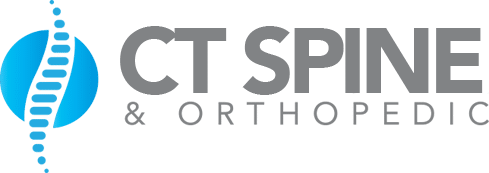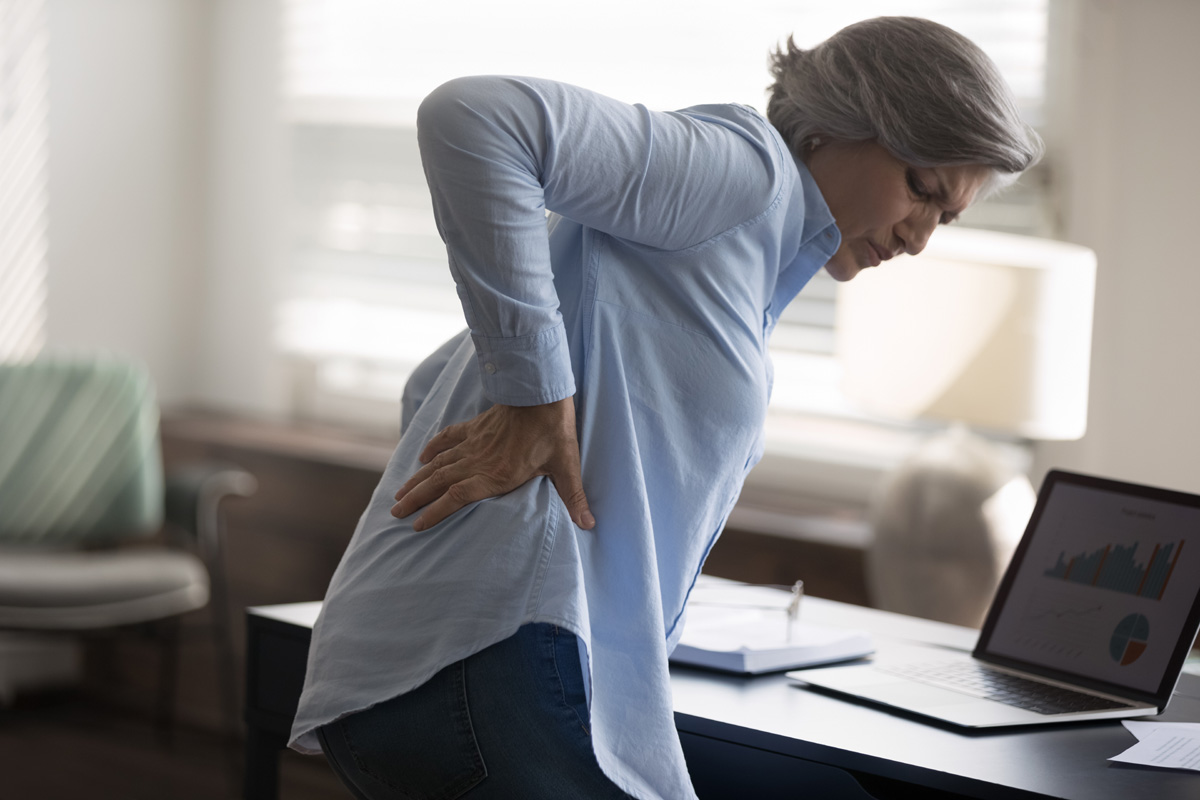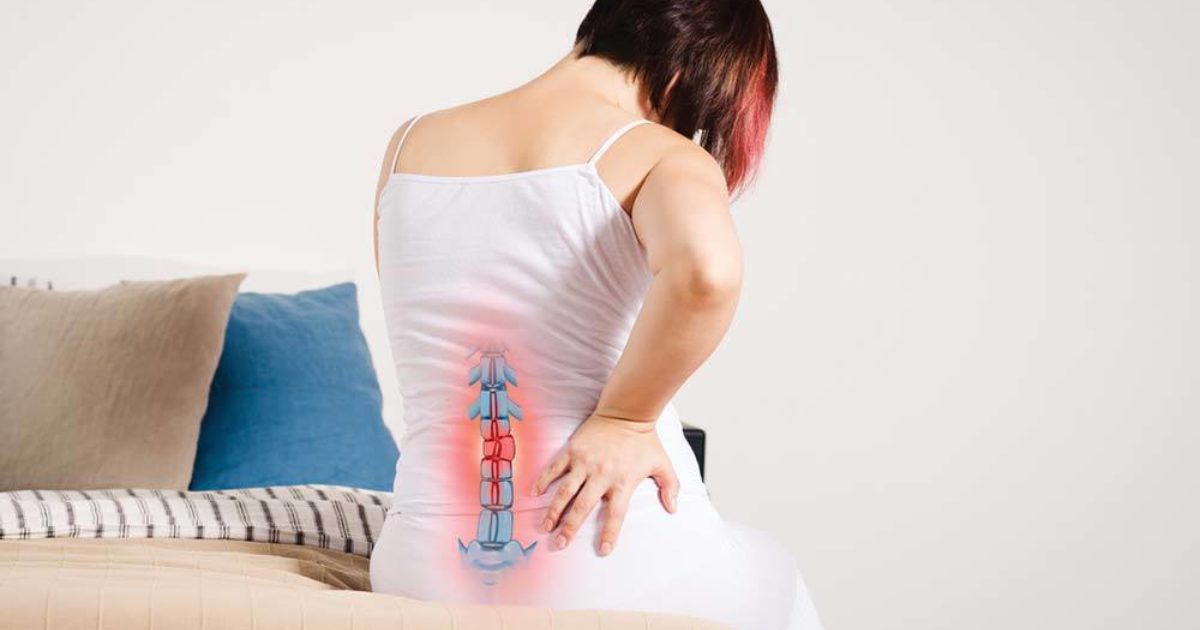A pulled muscle in the right side of the back can be a debilitating condition, characterized by symptoms ranging from mild discomfort to intense pain. Recognizing these symptoms enables the implementation of appropriate treatment and preventive measures. This health topic is crucial for comprehensive understanding and discussion.
Understanding Pulled Back Muscles
A pulled back muscle, common in athletes and people in physically demanding roles, involves strain caused by excessive stretching or tearing of muscle fibers. This strain can stem from a single strenuous event or repetitive movements stressing the back muscle over time.
Distinguishing muscle strain from a sprain is vital. The former refers to damage to the muscle or tendon, fibrous tissue connecting muscles to bones. In contrast, a sprain involves injury to ligaments, elastic bands stabilizing our joints. Symptoms like pain, swelling, and limited flexibility often overlap, causing confusion.
However, understanding these conditions is key for suitable treatment and recovery. In the case of a pulled back muscle, the therapeutic focus is on treating muscle or tendon strain, not ligament sprain. Hence, this distinction ensures the correct treatment approach.
Common Causes for Muscle Pulls
Heavy lifting, overexertion during exercise, and incorrect posture significantly contribute to muscle pulls, particularly in the back. These factors strain back muscles, leading to potential injury.
Heavy Lifting Consequences
Heavy lifting, when done improperly, often results in muscle pulls, specifically in the back’s complex musculature. Incorrect lifting techniques, such as twisting or turning the spine, overstretch back muscles, leading to strains. Overlooking weight limits and exerting excessive pressure on the back muscles can cause pulls or tears. Proper lifting techniques and weight limit adherence are crucial to preventing muscle pulls. Regular strength and flexibility training, combined with this knowledge, significantly reduces the risk of back muscle injury.
Overexertion During Exercise
Overexertion during exercise, especially high-intensity workouts without proper training, often results in muscle pulls. Pushing beyond physical limits without adequate preparation or recovery exacerbates this risk. Hydration is vital; sufficient water intake facilitates muscle function, reducing injury risks. When dehydrated, muscles lose elasticity and become prone to pulls. Therefore, balancing exercise intensity and hydration prevents overexertion and reduces the possibility of pulling a back muscle on the right side.
Incorrect Posture Impacts
Incorrect posture, especially during prolonged periods, triggers back muscle pulls, notably on the right side. Sedentary lifestyle exacerbates this, as improper lumbar support during prolonged sitting induces muscle strain and tension. Continuous strain causes micro-tears in muscle fibres, leading to pain. Posture correction techniques help realign the spine, reducing muscle strain. Maintaining a straight back while sitting or standing significantly lowers muscle pull risk. Monitoring posture is crucial to prevent muscle strain and potential injury.
Right Side Back Muscle Anatomy
The right side back muscles, consisting of extensor, flexor, oblique muscles, and the latissimus dorsi, contribute to support, flexibility, and strength in the human body. Each muscle group uniquely facilitates body posture, movement, and organ protection.
Specifically, extensor muscles aid in lifting and rotating the back, flexor muscles assist in body bending and flexing, oblique muscles enable spine rotation, and the latissimus dorsi, a large muscle, covers a substantial part of the back.
These muscles, differing in size, shape, and function, are interconnected with a complex network of nerves, blood vessels, and connective tissues, enhancing muscle functionality.
Although right back muscles mirror left ones, functions vary based on handedness, affecting muscle strain occurrence and treatment. Understanding this anatomy is crucial for diagnosing and treating conditions like pulled back muscles.
Symptoms of a Pulled Muscle
Recognizing pulled muscle symptoms aids in distinguishing it from severe conditions like a herniated disc. Pain characteristics and injury severity are key in understanding muscle strains. Knowledge of the recovery timeframe aids in injury management and realistic healing expectation setting.
Identifying Pulled Muscle Pain
To identify a pulled muscle, particularly on the right side of the back, recognition of key symptoms is necessary. This diagnosis aids in effective pain management and promotes muscle healing.
- Acute localized pain is felt on the right back side
- Movement or bending becomes difficult due to stiffness or pain
- The affected area may show swelling or bruising
- Muscle weakness may lead to inability to use the muscle
The intensity of these symptoms can differ, depending on the strain severity. Understanding these signs offers insights into back health and guides towards proper treatment.
Severity of Muscle Strains
Muscle strain severity, especially in the back, is assessed through symptom intensity and strain classification. Strains are categorized into three grades: mild (grade I), moderate (grade II), and severe (grade III). Mild strains cause minimal discomfort, moderate strains involve partial muscle fiber tears leading to significant pain and mobility restrictions, while severe strains signify complete muscle fiber rupture resulting in intense pain, swelling, and bruising. Pain management ranges from over-the-counter medication for mild strains to specialized treatments for severe injuries.
Recovery Time Expectations
Recovery time varies based on injury severity: mild muscle strains may heal in weeks, severe muscle tears may necessitate months of rehabilitation.
- Diet’s Impact on Muscle Healing: A protein-rich, vitamin-loaded balanced diet expedites healing.
- Sleep’s Contribution to Recovery: Optimal sleep is crucial for muscle repair and regeneration.
- Role of Physical Therapy: Executing prescribed exercises regularly aids in mobility restoration and muscle strengthening.
- Importance of Rest: Abstaining from strenuous activities prevents injury aggravation, facilitating muscle healing.
Specific Signs on the Right Side
Experiencing right side numbness and back muscle spasms are key signs of a pulled muscle in the right side of the back. The severity of these symptoms can range from mild discomfort to intense pain. A pulled back muscle can affect the nerves, causing decreased sensitivity or loss of sensation in the back or lower extremities. Muscle spasms, characterized by sudden and involuntary contractions, may intensify with movement and limit mobility. These symptoms can disrupt daily activities and potentially signal serious conditions like nerve compression or damage. Early detection and management of these symptoms, through professional medical attention, can prevent complications and expedite recovery.
Factors Increasing the Risk
Understanding factors increasing the risk of right back muscle strain is crucial. Excessive physical activity and poor posture are primary risk factors. Analyzing these factors aids in prevention and management of this common condition.
Excessive Physical Activity
Excessive physical activity, especially heavy lifting or repetitive motions, heightens the risk of straining right side back muscles. Key strategies for risk mitigation include activity modification and injury prevention.
Consider these points:
– Gradual increase in workout intensity or duration mitigates back muscle strain risk.
– Proper warm-up before physical activity reduces muscle injury risk.
– Correct training and technique in physical activities prevent muscle strains.
– Balanced workout routines, emphasizing core strength, prevent muscle imbalances and back strain.
Each point, vital for overall risk assessment, should be carefully considered.
Poor Posture Consequences
Poor posture, especially during long durations, heightens the risk of straining right-side back muscles. Sedentary activities, like desk jobs, can disrupt body alignment, increasing stress on back muscles. The persistent strain may result in muscle pulls or serious injuries.
Essential adjustments such as improving workstations, using supportive chairs, and maintaining balanced posture can significantly lessen muscle strain risk. Regular breaks and exercises can counterbalance the adverse effects of a sedentary lifestyle, further reducing the chance of back muscle injury.
Complications if Untreated
If a pulled back muscle on the right side is untreated, complications such as chronic pain, decreased mobility, and muscle deterioration can occur. The weakened muscle may increase risk of secondary injuries due to additional strain on other muscles and joints.
Untreated muscle injuries can also increase susceptibility to infections, potentially leading to abscesses or systemic infections.
Moreover, untreated pulled back muscles can lead to higher medical costs due to extensive treatment requirements, reduced productivity due to prolonged disability, potential development of depression or anxiety linked to chronic pain, and increased risk of future injuries due to compromised muscle strength and function.
Importance of Timely Diagnosis
Prompt diagnosis of a right-side pulled back muscle is crucial. Diagnostic tests quantify the pull’s severity and guide treatment selection. Swift diagnosis mitigates mental stress caused by uncertainty and discomfort, preventing exacerbation of physical pain and potential healing hindrance. Delayed diagnosis risks chronic pain, muscle imbalances, and possible nerve damage. Recognizing pulled back muscle symptoms and seeking immediate medical attention are vital for successful recovery.
Treatment Options Available
For a right-side pulled back muscle, treatment encompasses non-surgical interventions, medication, heat/cold therapy, and alternative therapies, all aimed at pain relief, inflammation reduction, and function restoration.
Non-surgical interventions like physical therapy and chiropractic care strengthen back muscles, improve flexibility, and align the spine, diminishing muscle strain. Medication, specifically non-steroidal anti-inflammatory drugs (NSAIDs) such as ibuprofen, manage pain and inflammation. Heat/cold therapy reduces inflammation, soothes the muscle, aiding healing. Alternative therapies like acupuncture, massage, and yoga relax the muscle, decrease pain, and enhance mobility.
A healthcare provider should guide treatment selection based on the individual’s needs and injury severity.
Home Remedies for Relief
Heat application and cold compression are effective home remedies for a pulled back muscle on the right side. The heat application technique relaxes tense muscles, improves blood circulation, and fosters healing. It can be administered using a hot water bottle, heat pad, or a warm bath. However, to avoid burns, apply heat for 20 minutes, then rest for 20 minutes.
Conversely, cold compression decreases inflammation and numbs pain. This can be achieved with an ice pack or a cloth-wrapped bag of frozen vegetables. To prevent skin damage, it should be applied intermittently.
These remedies, used together, can hasten recovery and manage pain effectively. They are not substitutes for professional medical treatment, so consultation with a healthcare provider is necessary for persistent or severe pain.
Prevention Strategies
To minimize the risk of right-side back muscle strain, incorporate preventive measures based on body mechanics knowledge. Understanding back muscle anatomy informs strategies like ergonomic adjustments, reducing strain risk. Examples: chair height adjustments, supportive cushion use.
Recognize stretching benefits. Regular flexibility maintenance through stretching prevents injuries. Additional preventive steps include:
- Proper lifting techniques: Lift using legs, maintain straight back, avoid twisting.
- Healthy weight maintenance: Prevents back muscle strain.
- Regular exercise: Core muscle strengthening supports back.
- Adequate hydration: Prevents muscle cramps leading to strain.
Consult professionals for personalized advice. Adherence to these strategies reduces back muscle strain risk. Each action is crucial for natural language processing and semantic search engine optimization.
Recovering From a Pulled Muscle
Rest, rehabilitation, and medical interventions manage a pulled back muscle recovery. Initially, rest allows inflamed tissues to heal but prolonged inactivity risks muscle weakness and complications.
Rehabilitation involves muscle strengthening techniques, supervised by a physiotherapist, which rebuild strength and flexibility in the injured muscle. Gradual initiation prevents re-injury, and intensity increases as the muscle heals.
Pain management is crucial in recovery. Non-prescription NSAIDs manage pain and inflammation; severe cases may require prescription medications. Heat or cold compresses provide temporary relief. Each stage of recovery is essential for optimal healing.
Frequently Asked Questions
Can Pulled Back Muscles Affect My Posture?
Indeed, pulled back muscles impact posture. Strain symptoms, specifically pain and stiffness, cause compensatory postures. Posture enhancement methods assist recovery and safeguard against further harm.
What Exercises Should I Avoid With a Pulled Back Muscle?
A pulled back muscle necessitates avoidance of strenuous activities including heavy lifting, intense cardio, and certain weight training. Comprehension of recovery timeframe and effective pain control strategies is vital for safe healing.
Are There Any Dietary Changes That Can Help in Healing a Pulled Back Muscle?
Protein intake enhancement and proper hydration aid in pulled back muscle recovery. Protein facilitates tissue repair, and hydration manages inflammation and optimizes body function for effective healing.
Will a Pulled Back Muscle Affect My Ability to Lift Heavy Items?
Indeed, a pulled back muscle significantly impacts heavy lifting ability. Crucial for healing are pain management and strict adherence to recovery timelines.
Can Emotional Stress Contribute to Pulling a Back Muscle?
Indeed, emotional stress can result in a back muscle pull. It escalates muscular tension, potentially causing injuries. Implementing stress management techniques is vital for reducing emotional stress-related physical effects.



